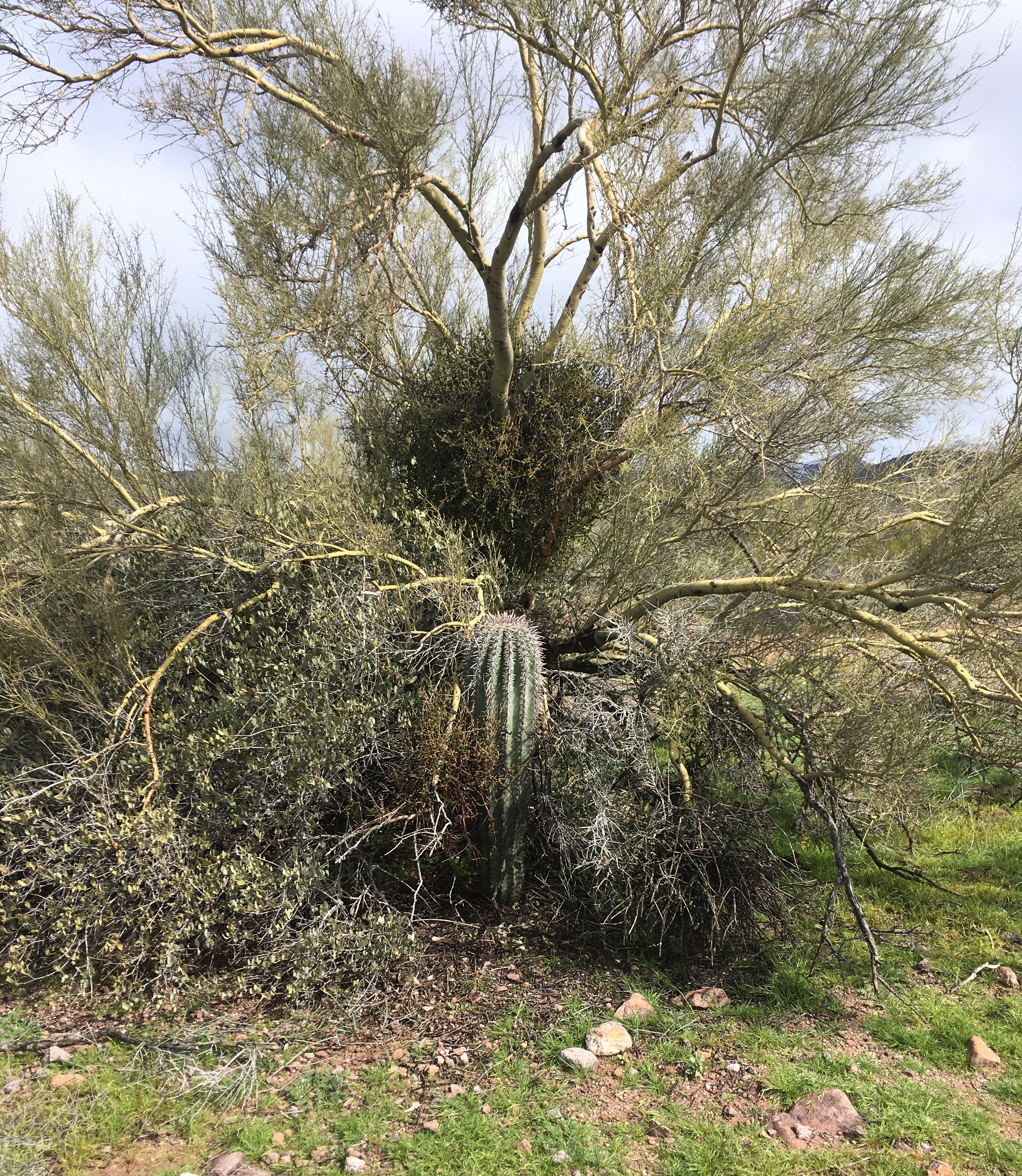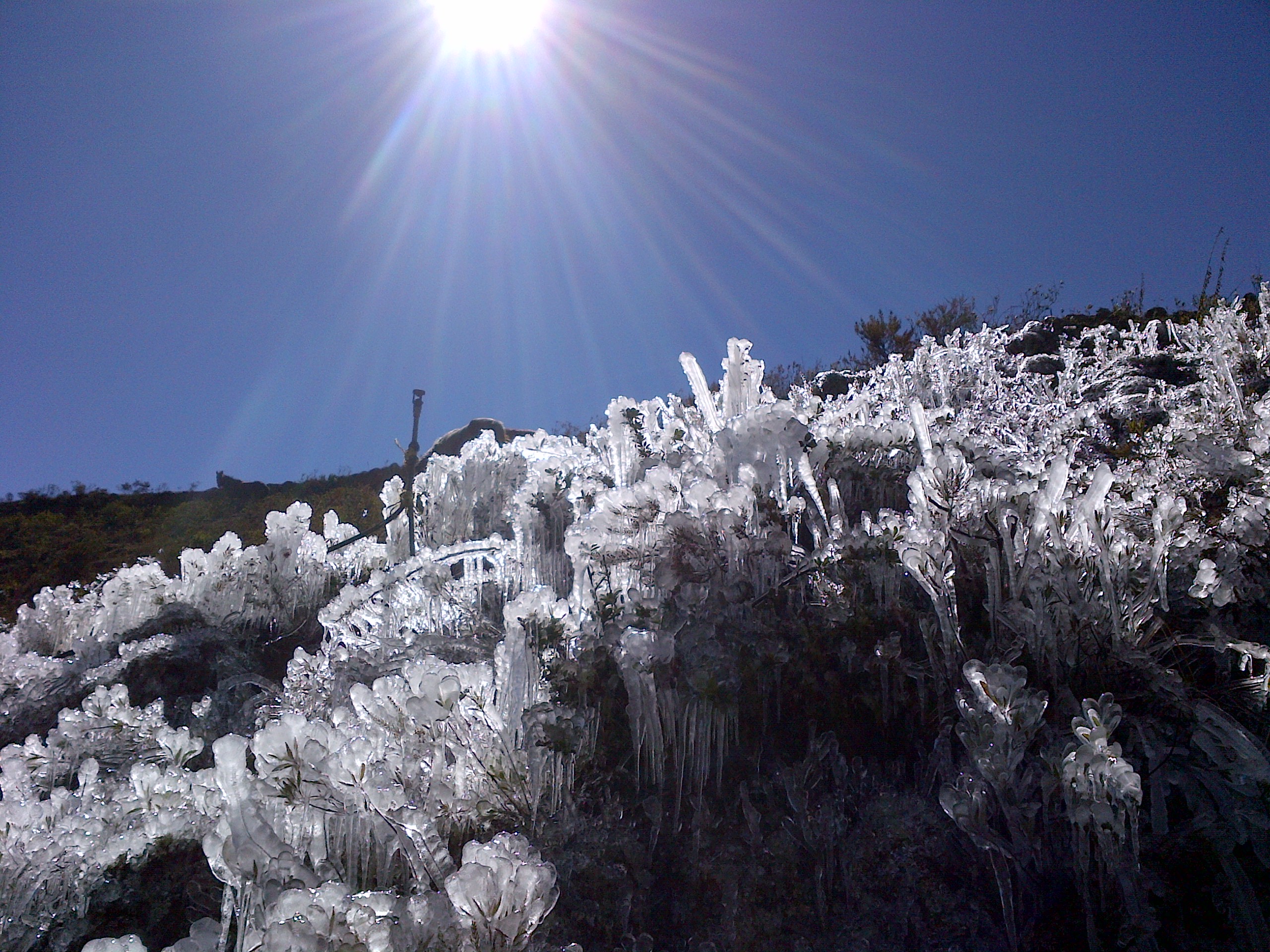|
Nurse Crop
Nurse crops are a subtype of nurse plants, facilitating the growth of other species of plants. The term is used primarily in agriculture, but also in forestry. Cover crops are a type of nurse crop. Agriculture In agriculture, a nurse crop is an annual crop used to assist in establishment of a perennial crop. The widest use of nurse crops is in the establishment of legumaceous plants such as alfalfa, clover, and trefoil. Occasionally, nurse crops are used for establishment of perennial grasses. Nurse crops reduce the incidence of weeds, prevent erosion, and prevent excessive sunlight from reaching tender seedlings. Often, the nurse crop can be harvested for grain, straw, hay, or pasture. Oats are the most common nurse crop, though other annual grains are also used. Nurse cropping of tall or dense-canopied plants can protect more vulnerable species through shading or by providing a wind break. However, if ill-maintained, nurse crops can block sunlight from reaching seedlings ... [...More Info...] [...Related Items...] OR: [Wikipedia] [Google] [Baidu] |
Nurse Plants
A nurse plant is one that serves the ecological role of helping seedlings establish themselves, and of protecting young plants from harsh conditions. This effect is particularly well studied among plant communities in xeric environments. Effects Overstory trees and shrubs have a facilitative effect on the establishment of understory plants. This effect is also seen in some interactions between herbaceous plant species. Nurse plants are important in xeric environments because they provide shaded microhabitats for the survival of several other plant species, buffering temperature extremes and reducing moisture loss. For example, in the Sonoran Desert, nurse plants canopies provide reduced summer daytime temperatures, soil surface temperatures, and direct sunlight, higher soil fertility, protection from the wind and browsing animals, reduced evapotranspiration rates in the nursed species, elevated nighttime temperatures, and post-fire resprouting in some species... This means that nu ... [...More Info...] [...Related Items...] OR: [Wikipedia] [Google] [Baidu] |
Pest (organism)
A pest is any organism harmful to humans or human concerns. The term is particularly used for creatures that damage crops, livestock, and forestry or cause a nuisance to people, especially in their homes. Humans have modified the environment for their own purposes and are intolerant of other creatures occupying the same space when their activities impact adversely on human objectives. Thus, an elephant is unobjectionable in its natural habitat but a pest when it tramples crops. Some animals are disliked because they bite or sting; wolves, snakes, wasps, ants, bed bugs, fleas and ticks belong in this category. Others enter the home; these include houseflies, which land on and contaminate food; beetles, which tunnel into the woodwork; and other animals that scuttle about on the floor at night, like rats and cockroaches, which are often associated with unsanitary conditions. Agricultural and horticultural crops are attacked by a wide variety of pests, the most important being ... [...More Info...] [...Related Items...] OR: [Wikipedia] [Google] [Baidu] |
Crops
A crop is a plant that can be grown and harvested extensively for profit or subsistence. In other words, a crop is a plant or plant product that is grown for a specific purpose such as food, fibre, or fuel. When plants of the same species are cultivated in rows or other systematic arrangements, it is called crop field or crop cultivation. Most crops are harvested as food for humans or fodder for livestock. Important non-food crops include horticulture, floriculture, and industrial crops. Horticulture crops include plants used for other crops (e.g. fruit trees). Floriculture crops include bedding plants, houseplants, flowering garden and pot plants, cut cultivated greens, and cut flowers. Industrial crops are produced for clothing (fiber crops e.g. cotton), biofuel (energy crops, algae fuel), or medicine (medicinal plants). Production There was an increase in global production of primary crops by 56% between 2000 and 2022 to 9.6 billion tonnes, which represents a 0.7 ... [...More Info...] [...Related Items...] OR: [Wikipedia] [Google] [Baidu] |
Agriculture
Agriculture encompasses crop and livestock production, aquaculture, and forestry for food and non-food products. Agriculture was a key factor in the rise of sedentary human civilization, whereby farming of domesticated species created food surpluses that enabled people to live in the cities. While humans started gathering grains at least 105,000 years ago, nascent farmers only began planting them around 11,500 years ago. Sheep, goats, pigs, and cattle were domesticated around 10,000 years ago. Plants were independently cultivated in at least 11 regions of the world. In the 20th century, industrial agriculture based on large-scale monocultures came to dominate agricultural output. , small farms produce about one-third of the world's food, but large farms are prevalent. The largest 1% of farms in the world are greater than and operate more than 70% of the world's farmland. Nearly 40% of agricultural land is found on farms larger than . However, five of every six farm ... [...More Info...] [...Related Items...] OR: [Wikipedia] [Google] [Baidu] |
Multiple Cropping
In agriculture, multiple cropping or multicropping is the practice of growing two or more crops in the same piece of land during one year, instead of just one crop. When multiple crops are grown simultaneously, this is also known as intercropping. This cropping system helps farmers to double their crop productivity and their income. But, the selection of two or more crops for practicing multicropping mainly depends on the mutual benefit of the selected crops. Threshing can be difficult in multiple cropping systems where crops are harvested together. It can take the form of double-cropping, in which a second crop is planted after the first has been harvested. In the Garhwal Himalaya of India, a practice called barahnaja involves sowing 12 or more crops on the same plot, including various types of beans, grains, and millets, and harvesting them at different times. Benefits of multiple cropping Adopting the practice of multiple cropping on a large scale can help in reducing th ... [...More Info...] [...Related Items...] OR: [Wikipedia] [Google] [Baidu] |
Companion Planting
Companion planting in gardening and agriculture is the planting of different crops in proximity for any of a number of different reasons, including Weed control, weed suppression, pest control, pollination, providing habitat for beneficial insects, maximizing use of space, and to otherwise increase crop productivity. Companion planting is a form of polyculture. Companion planting is used by farmers and gardeners in both industrialized and developing countries for many reasons. Many of the modern principles of companion planting were present many centuries ago in forest gardens in Asia, and thousands of years ago in Mesoamerica. The technique may allow farmers to reduce costly inputs of artificial Fertilizer, fertilisers and pesticides. Traditional practice History Companion planting was practiced in various forms by the indigenous peoples of the Americas prior to the arrival of Europeans. These peoples domesticated Cucurbita pepo, squash 8,000 to 10,000 years ago, then m ... [...More Info...] [...Related Items...] OR: [Wikipedia] [Google] [Baidu] |
Understory
In forestry and ecology, understory (American English), or understorey (English in the Commonwealth of Nations, Commonwealth English), also known as underbrush or undergrowth, includes plant life growing beneath the Canopy (biology), forest canopy without penetrating it to any great extent, but above the forest floor. Only a small percentage of light penetrates the canopy, so understory vegetation is generally Shade tolerance, shade-tolerant. The understory typically consists of trees stunted through lack of light, other small trees with low light requirements, saplings, shrubs, vines, and undergrowth. Small trees such as holly and Cornus (genus), dogwood are understory specialists. In Temperate broadleaf and mixed forest, temperate deciduous forests, many understory plants start into growth earlier in the year than the canopy trees, to make use of the greater availability of light at that particular time of year. A gap in the canopy caused by the death of a tree stimulates the ... [...More Info...] [...Related Items...] OR: [Wikipedia] [Google] [Baidu] |
Shade Tolerance
In ecology, shade tolerance is a plant's ability to tolerate low light levels. The term is also used in horticulture and landscaping, although in this context its use is sometimes imprecise, especially in labeling of plants for sale in nursery (horticulture), commercial nurseries. Shade tolerance is a complex, multi-faceted property of plants. Different plant species exhibit different adaptations to shade (shadow), shade, and a particular plant can exhibit varying degrees of shade tolerance, or even of requirement for light, depending on its history or stage of development. Basic concepts Except for some parasitic plants, all land plants need sunlight to survive. However, in general, more sunlight does not always make it easier for plants to survive. In direct sunlight, plants face desiccation and exposure to UV rays, and must expend energy producing pigments to block UV light, and waxy coatings to prevent water loss. Plants adapted to shade have the ability to use far-red light ... [...More Info...] [...Related Items...] OR: [Wikipedia] [Google] [Baidu] |
Aspen
Aspen is a common name for certain tree species in the Populus sect. Populus, of the ''Populus'' (poplar) genus. Species These species are called aspens: * ''Populus adenopoda'' – Chinese aspen (China, south of ''P. tremula'') * ''Populus davidiana'' – Korean aspen (Eastern Asia) * ''Populus grandidentata'' – Bigtooth aspen (eastern North America, south of ''P. tremuloides'') * ''Populus sieboldii'' – Japanese aspen (Japan) * ''Populus tremula'' – Eurasian aspen (northern Europe and Asia) * ''Populus tremuloides'' – Quaking aspen or trembling aspen (northern and western North America) Habitat and longevity file:20130713Zitterpappel.ogv, The trembling of the leaves of the Populus tremula, trembling aspen Aspen trees are all native to cold regions with cool summers, in the north of the Northern Hemisphere, northern hemisphere, extending south at high-altitude areas such as mountains or high plains. They are all medium-sized deciduous trees reaching tall. In North Am ... [...More Info...] [...Related Items...] OR: [Wikipedia] [Google] [Baidu] |
Shade (shadow)
Shade is the blocking of sunlight (in particular direct sunshine) by any object, and also the shadow created by that object. It may refer to blocking of sunlight by a roof, a tree, an umbrella, a window shade or blind, wall, curtains, or other objects. As a resource In temperate and tropical zones (most places on Earth), shade is an important issue in providing cooling and shelter from harmful heat and ultraviolet emitted by the Sun. Plants Green plants produce shade by absorbing sunlight to invest as energy in photosynthesis to produce sugar Sugar is the generic name for sweet-tasting, soluble carbohydrates, many of which are used in food. Simple sugars, also called monosaccharides, include glucose Glucose is a sugar with the Chemical formula#Molecular formula, molecul .... They also actively transpire, producing an additional cooling effect. In gardening terms, there are various types of shade: *Full sun – more than five hours of direct sun per ... [...More Info...] [...Related Items...] OR: [Wikipedia] [Google] [Baidu] |
Thermal Insulation
Thermal insulation is the reduction of heat transfer (i.e., the transfer of thermal energy between objects of differing temperature) between objects in thermal contact or in range of radiative influence. Thermal insulation can be achieved with specially engineered methods or processes, as well as with suitable object shapes and materials. Heat flow is an inevitable consequence of contact between objects of different temperature. Thermal insulation provides a region of insulation in which thermal conduction is reduced, creating a thermal break or thermal barrier, or thermal radiation is reflected rather than absorbed by the lower-temperature body. The insulating capability of a material is measured as the inverse of thermal conductivity, thermal conductivity (k). Low thermal conductivity is equivalent to high insulating capability (R-value (insulation), resistance value). In thermal engineering, other important properties of insulating materials are product density, density (ρ) ... [...More Info...] [...Related Items...] OR: [Wikipedia] [Google] [Baidu] |
Frost
Frost is a thin layer of ice on a solid surface, which forms from water vapor that deposits onto a freezing surface. Frost forms when the air contains more water vapor than it can normally hold at a specific temperature. The process is similar to the formation of dew, except it occurs below the freezing point of water typically without crossing through a liquid state. Air always contains a certain amount of water vapor, depending on temperature. Warmer air can hold more than colder air. When the atmosphere contains more water than it can hold at a specific temperature, its relative humidity rises above 100% becoming supersaturated, and the excess water vapor is forced to deposit onto any nearby surface, forming seed crystals. The temperature at which frost will form is called the dew point, and depends on the humidity of the air. When the temperature of the air drops below its dew point, excess water vapor is forced out of solution, resulting in a phase change directly fro ... [...More Info...] [...Related Items...] OR: [Wikipedia] [Google] [Baidu] |





